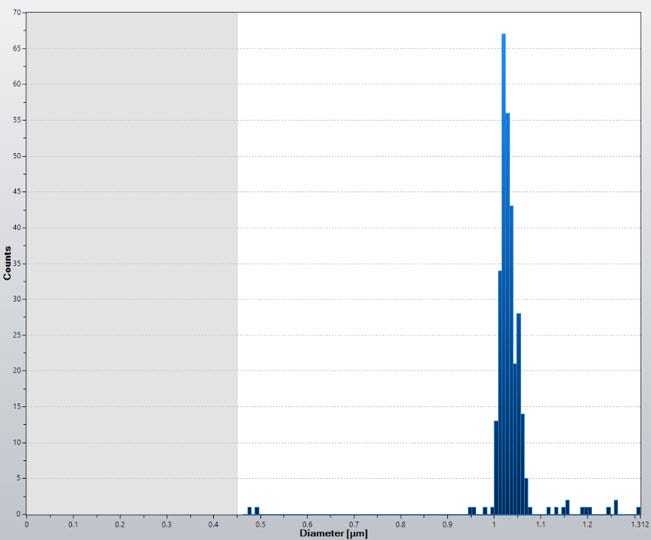Before undertaking measurements on the Archimedes with a new sensor, the system must be calibrated. Once the system has been installed with water and reference fluid, the sensor aligned and optimised, the Archimedes should be calibrated using NIST-traceable standards.
This section describes how to calibrate the Archimedes using software version 1.21. If a software update is required, please contact your local Malvern Panalytical representative.
It is best practice to check performance with size traceable standards on a daily basis and recommend recalibration should this daily check report a size that deviates from the expected size of the NIST-traceable standard used.
1. Open the Experiment View on the Archimedes Software, and select “Acquire”.
2. Complete the New Experiment dialogue as per Figure 1 below, and click OK:

Figure 1: Calibration experiment setup window
3. When prompted, replace the vial in the sample port with a vial containing the correct size standard polystyrene latex solution for the sensor type in use. Click OK, change the load time to 30 seconds and press enter.
4. After the specified number of particles are counted (300 in this example) the X scale of the display will change from frequency to diameter and a point sensitivity value will appear near the bottom of the table on the left side of the software. At this time, a new window will appear prompting the user to replace the latex bead standard with a 100% D20 solution.
5. When the Bulk Sensitivity Calibration dialogue box appears, replace the vial containing polystyrene latex solution with a vial containing 100% D2O, and click OK. The 100% D2O solution will load for 20 seconds and the system will measure the frequency response produced by this fluid. When completed, the user will see a value appear in the lower part of the table on the left side of the screen in the bulk sensitivity field.
6. Expected values for bulk and point sensitivity are shown in Table 1. If the values are outside these specifications, please repeat the full calibration procedure. If the values are still not in the specified range, please contact your local Malvern Panalytical rep or the Helpdesk)
| Sensor | Part Number | Point Sensitivity (mHz/fg) | Bulk Sensitivity (Hz/((g/cc)) |
|---|---|---|---|
| Micro H | RMM0003 | 6 to 8 | -48000 to -58000 |
| Nano E | RMM0004 | 24 to 28 | -7000 to -11000 |
| Micro E | RMM0419 | 6 to 8 | -48000 to -58000 |
7. The histogram produced from the calibration should contain a well-defined
peak, with only a small number of contaminant particles present, as seen in Figure 2.

Figure 2: Example of a suitable calibration histogram for a size-traceable 1.030 µm polystyrene latex standard
8. The Archimedes is now ready for sample measurements. If the Archimedes is not going to be used to perform further measurements immediately, select Load, replace the sample vial with one containing water, and load the system for 200 seconds. Then select Load, screw vials of ethanol into the Sample and Reference ports, load the system for 60 seconds, then switch off the instrument.
If assistance is required in the setup or use of the Archimedes, please contact your local Malvern Panalytical representative or contact the helpdesk.
Other Basic Guides for Archimedes systems for resonance mass measurements are available: